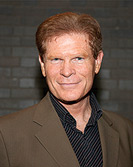How Interior Design Influences Physical and Mental Wellbeing
- For this article, Log In to:
-
 Download PDF
Download PDF
 Bruce Carter
Bruce Carter
Interior design plays a crucial role in addressing the health club industry's challenge of people disliking exercise by creating an environment that people love and want to spend time within.
Interior design has a deep and measurable impact on both physical and mental health within health club environments, playing a critical role in enabling members to meaningfully improve their wellbeing. Thoughtful design goes beyond aesthetics; it orchestrates how spaces are experienced, influencing emotional responses, motivation, community and long-term engagement with physical activity.
In other words, the environment can significantly impact a person's mental health by influencing mood, stress levels and overall psychological wellbeing.
Mental health status often affects motivation and ability to engage in physical activity. Being physically active improves mental health and self-image through physiological and psychological benefits. This creates a reinforcing cycle where a positive environment fosters good mental health, which leads to more physical activity, which in turn further benefits mental health.
This cycle continuously sustains and strengthens itself, suggesting that optimizing the environment plays a critical role in promoting an ongoing healthy interplay between mental and physical health.
Design can help to maximize health benefits by applying evidence-based principles from environmental psychology. This means crafting spaces that are not only visually appealing but that also foster social connection, motivation and peace: key drivers for adherence to fitness routines and long-term member satisfaction. Strategic design fosters a sense of belonging, boosts mood and strengthens community among club members.
Design and Social Interaction
A key part of effective club design involves deliberately committing space for social areas rather than viewing these as taking away from workout space. Social spaces offer relaxed environments where members can socialize, share interests beyond fitness and form friendships naturally, increasing emotional investment in the club and motivation to keep coming back. Modern fitness clubs are shifting from purely functional workout spaces to environments that promote community, wellbeing and social interaction. Creating lounges, dedicated comfortable seating areas, communal spaces and co-working spaces within fitness clubs encourages members to connect, relax and engage with one another, making the gym experience about more than just physical exercise. Such social zones act as a "third place" beyond home and work where members feel a sense of belonging and support.
Operators report that social spaces do not negatively impact workout space but rather enhance member satisfaction and retention by fostering community. Instead of cramming equipment densely, layouts increasingly incorporate open plans and smaller pods of workout equipment combined with adjacent social and recovery zones. These allow both focused training and social interaction to coexist, improving the overall attractiveness of the facility. Thus, integrating ample social areas is strategic, driving greater member engagement and loyalty while supporting mental and physical health holistically.
To summarize, viewing social areas as complementary rather than subtractive to workout space is central to forward-thinking club design that meets the evolving expectations of today's fitness members.
Design Can Reduce Anxiety and Intimidation
A club environment needs to minimize the anxiety and intimidation people feel, thinking they are out of shape. Club owners are often removed from the actual emotional discomfort both men and women feel about this.
To do this, design needs to create spaces that feel welcoming and non-judgmental, avoiding intimidating bright lights, loud music and crowded layouts that can heighten anxiety. Open, spacious layouts facilitate creativity, freedom and cheerfulness. Higher ceilings support an open feeling, while cluttered or cramped spaces can heighten stress and decrease focus.
Familiarity and comfort are important (e.g., friendly faces, supportive friends) to ease nervousness when entering these environments.
Reducing obtrusive noise, such as choosing from a variety of attractive hanging architectural sound-absorbing features are widely available online, offering both visual appeal and effective noise reduction for workout spaces.
Design, Cleanliness and a Positive Gym Experience
Thoughtful interior design can significantly impact the perception and maintenance of cleanliness in gyms, which is crucial for the emotional and mental experience of gym-goers. Choosing materials, finishes and colors that support cleanliness is essential. For example, although white or light-colored walls and floors can give a clean and bright appearance, they require a high commitment to frequent cleaning and maintenance to avoid looking dirty or worn. Instead, neutral tones with durable, easy-to-clean materials like certain stones, vinyl or rubber flooring are often preferred to maintain a clean look without demanding excessive upkeep. It is important to note that a dirty club with unpleasant odors can quickly bring on negative emotions, and they become associated with a "bad" club.
Design and Peace of Mind
One last mental health component for clubs to include is to provide some type of calming experience for members. These calming experiences take various forms such as dedicated class spaces for yoga and meditation, relaxation areas resembling lounges or simply inviting locker rooms designed to promote tranquility. A locker room that incorporates soft music, soothing colors, gentle lighting and natural finishes helps to balance out the energetic spaces of a club.
• • •
Research highlights that strategic interior design, built upon principles of environmental psychology and evidence-based design, creates spaces that actively promotes wellness. Integration of holistic design elements ensures both beauty and functionality, helping individuals manage stress, chronic conditions and their wellbeing more effectively. Thoughtful interior design in health clubs plays a crucial role in supporting both physical and mental health by creating environments that motivate, energize and provide comfort to users.

